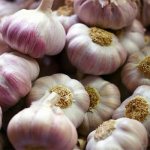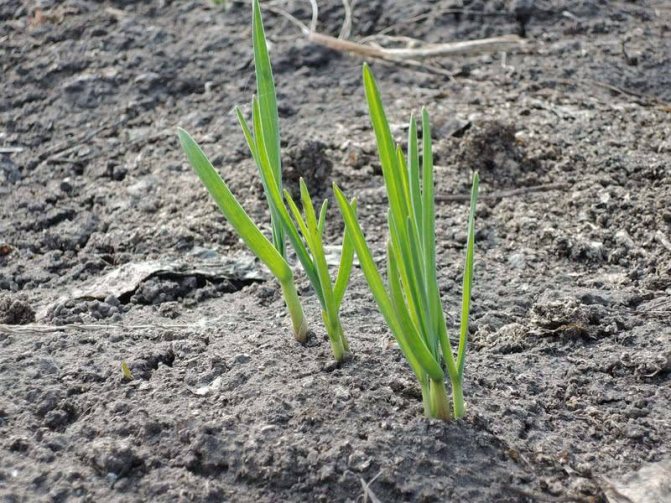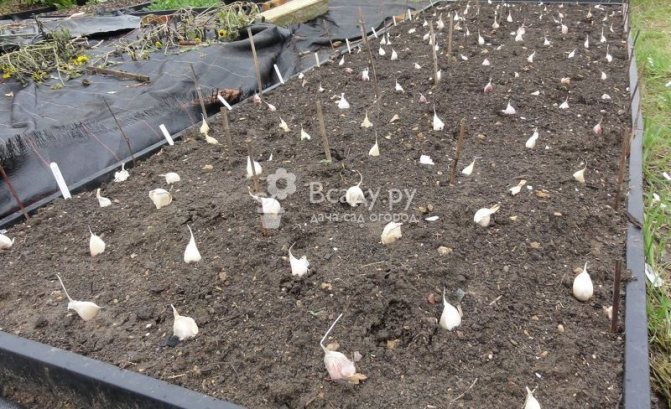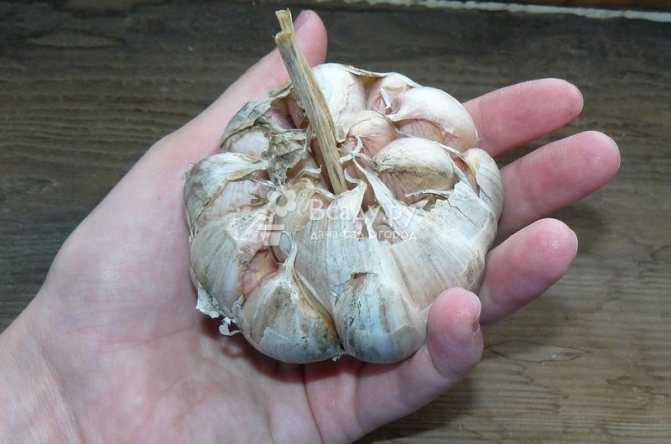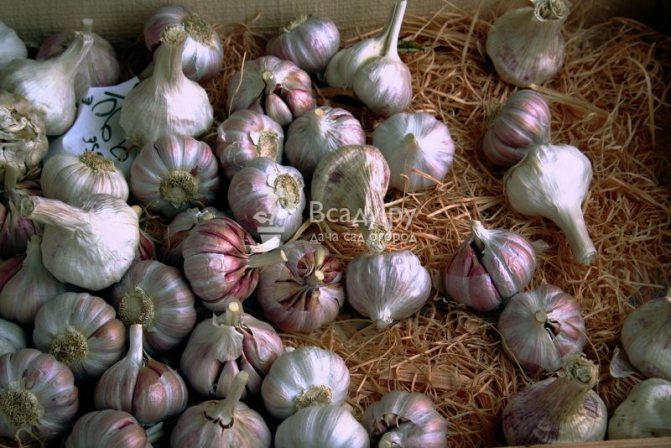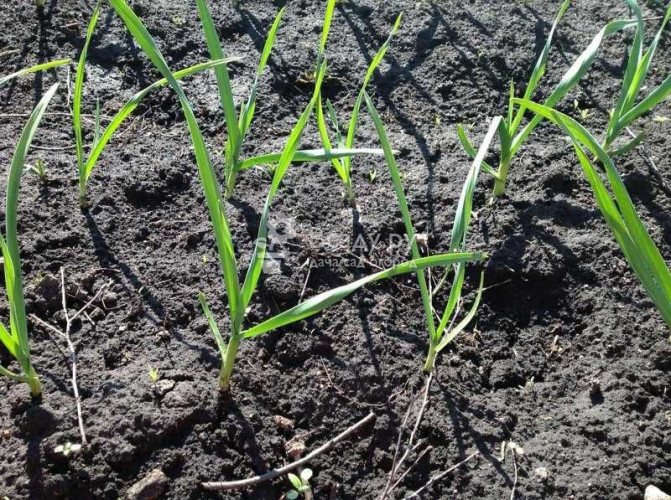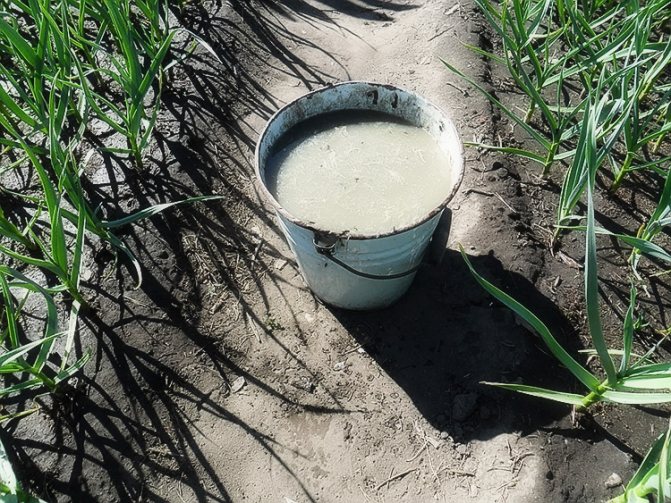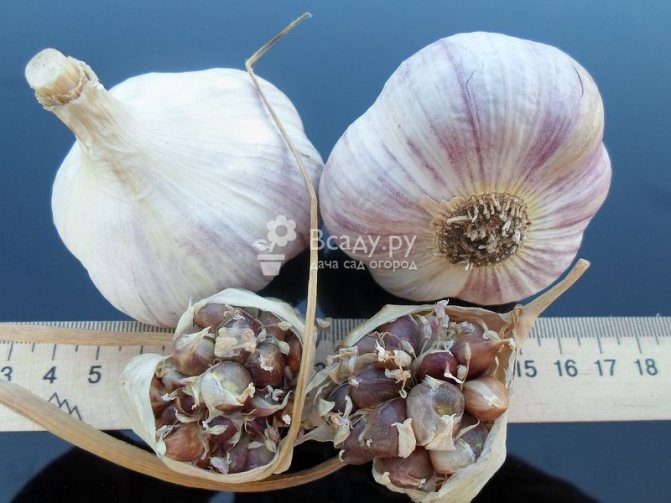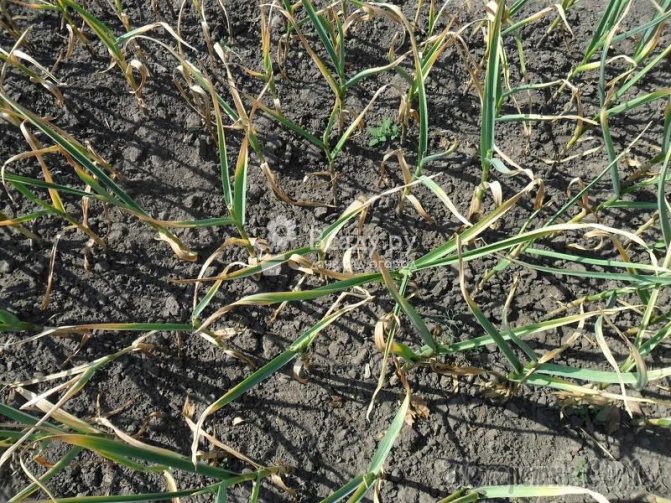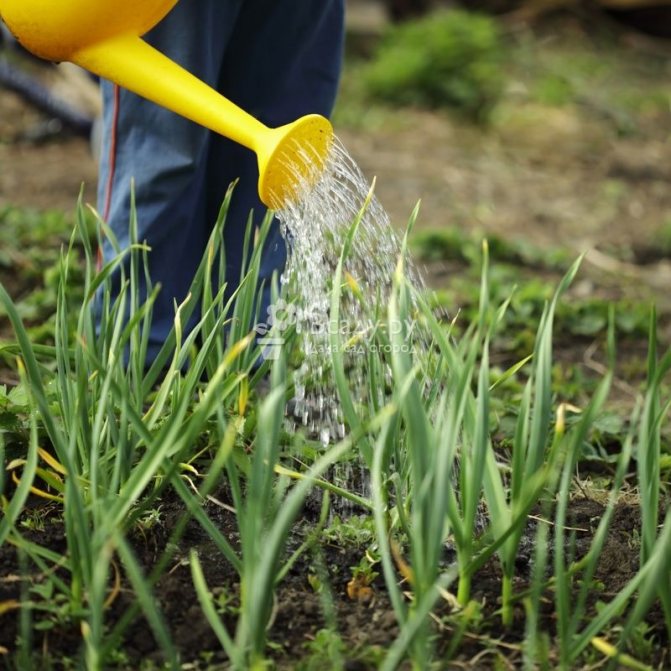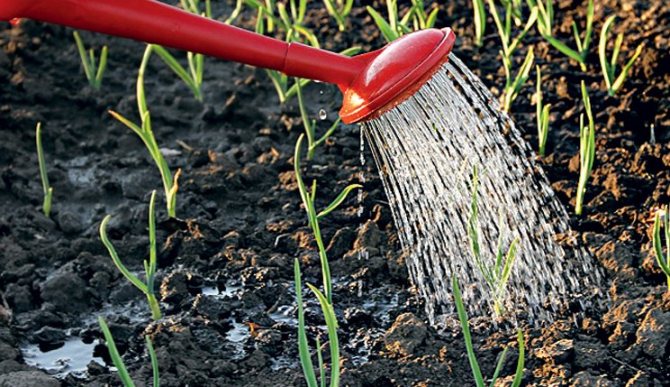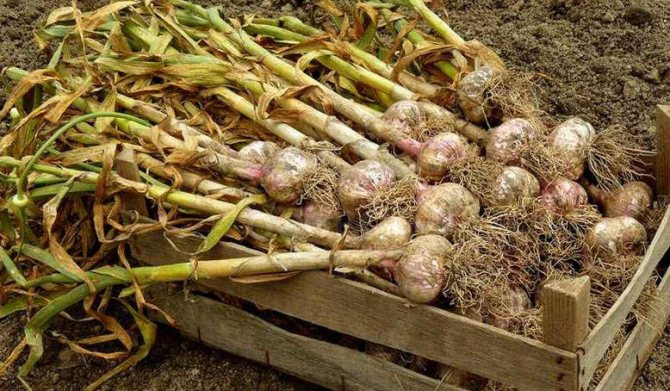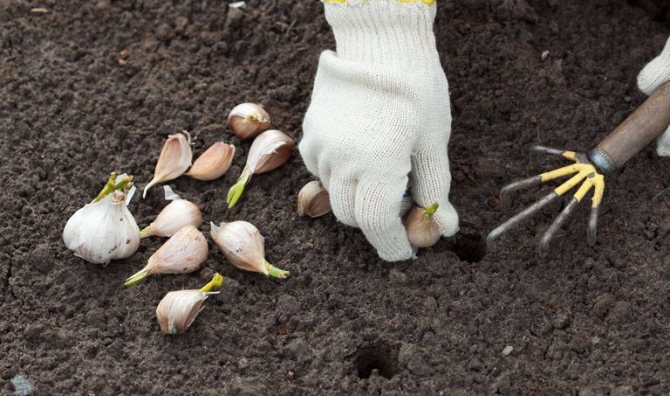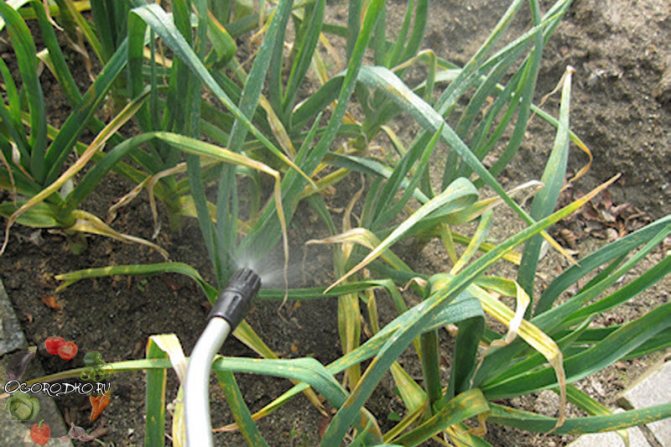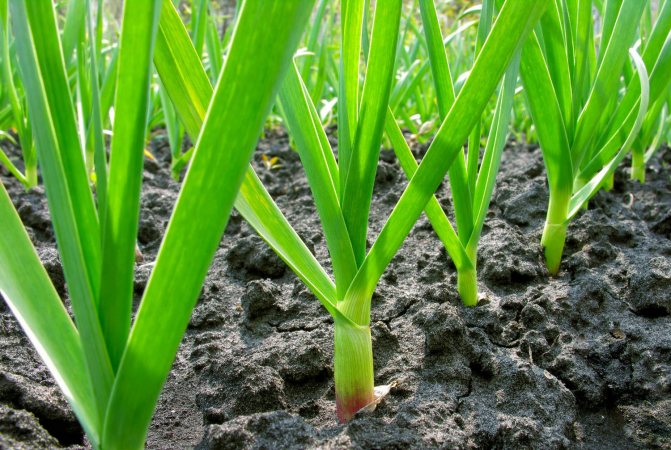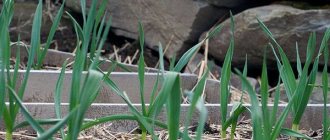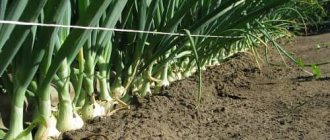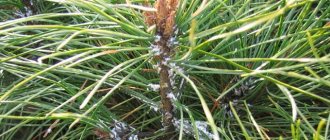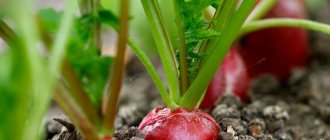Garlic is a herbaceous perennial. It is a popular vegetable crop. The homeland of garlic is considered to be Central Asia, but now it is cultivated all over the world. Garlic is prized for its ability to strengthen the immune system, improve digestion, and stimulate appetite. This vegetable can be planted in spring and fall. It all depends on the species. Let's talk today about winter garlic, planting and care in the open field. Let's talk about the most popular varieties of winter garlic.
Brief description of cultivation

- Landing... It is necessary to plant garlic in open ground no later than the first half of April, while the site is prepared in the autumn. Also, a winter planting is suitable for garlic from mid-September to the second half of October.
- Illumination... The plot should be sunny or shaded.
- Priming... Moderately moist and nutritious loam, which should be neutral, is best suited for growing such a crop.
- Watering... In a dry period, garlic should be watered abundantly (10 to 12 liters of water are taken per 1 square meter of the garden). Watering stops in August.
- Fertilizer... When the seedlings appear, they should be fed with urea or mullein, repeated feeding is carried out at intervals of 15 days. During one season, the bushes will need to be fed only 4 times.
- Reproduction... Vegetative - with the help of cloves.
- Harmful insects... Caterpillars of garden, winter, cabbage and gamma scoops, centipedes, onion moths and flies, bears, stem nematodes, lurkers, tobacco thrips.
- Diseases... Gray, white and cervical rot, downy mildew, jaundice, fusarium, helminthosporium, smut, rust, viral mosaic, tracheomycosis.
How to choose a site
Garlic is not a particularly demanding crop, but it will grow poorly in shaded areas. Therefore, it is better to choose a sunny area. For the onion family, it is advisable to choose a fertile sandy loam or loamy soil with low or neutral acidity. Excessive humidity will have a bad effect on the crop and can cause the garlic heads to rot. For this reason, it is better to plant it on plains or hills with deep soil waters. It should also be borne in mind that the root system of garlic is poorly developed, it is located at a depth of 20-30 cm. Therefore, the plant does not have the ability to reach the beneficial elements and moisture located deep in the soil.
Features of garlic
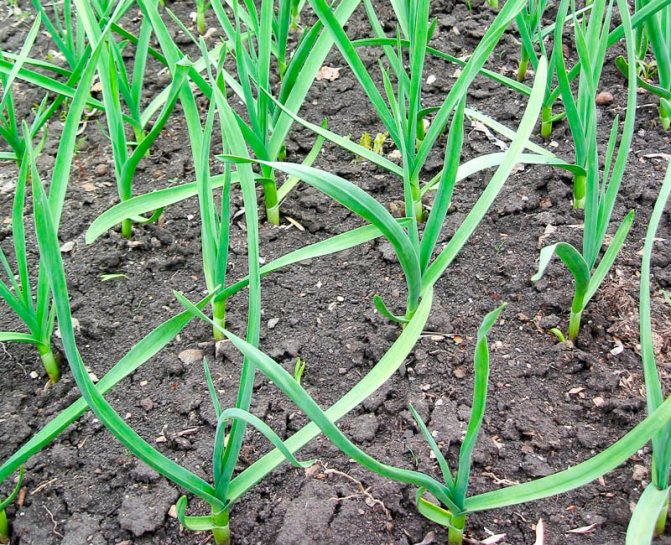

Garlic has a fibrous root system. The complex bulb of a rounded shape is slightly flattened, it forms in the axils of the scales of 2-50 children, which are called teeth or lobules, on their surface there are scales of a pale yellow, dark purple, white or violet-pink color. Lanceolate narrow leaf plates, all-edged, erect or drooping grooved, from the seamy side they are keeled. The leaves reach a width of 10 mm, and their length varies from 0.3 to 1 meter. The leaf plates grow one from the other, and a false stem is formed, such as that of onions, but it is more durable. The height of the peduncle varies from 0.6 to 1.5 m, at its top there is an umbrella-shaped inflorescence, it is hidden by a film shell, which breaks at the moment of disclosure of sterile flowers with long pedicels, they consist of 6 stamens and white or light petals lilac in color, while in length they reach 0.3 cm. The fruit is a box. There are winter and spring garlic.
Planting garlic outdoors
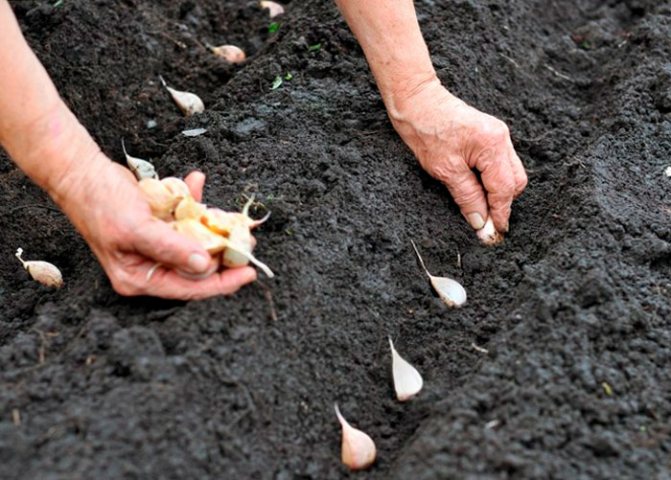

What time to plant
It is necessary to plant garlic in open soil no later than the first half of April, however, it is quite difficult to dig up the frozen soil, so you should start preparing a plot for spring garlic in autumn. It is necessary to plant garlic in autumn from mid-September to the second half of October, the planted teeth before the onset of frost should have time to form a powerful root system, which should penetrate 10 centimeters deep. However, the bushes should not start growing.
Suitable soil
To grow such a crop, you need a neutral and nutritious soil, but loam is best for this. The soil should not be too dry, but for planting garlic, you cannot choose low-lying areas where there is an accumulation of rain or melt water. The preparation of the site is carried out in the autumn, for this, it is deeply digged, while 20 grams of potassium salt, 30 grams of superphosphate and 1 bucket of humus are added to the soil per 1 square meter of the site. In spring, the surface of the garden bed only needs to be leveled with a rake. Then you can start planting the garlic. Plants such as zucchini, beans, green manure, any cabbage, pumpkin and peas are considered good predecessors of such a culture. In those areas where cucumbers, tomatoes, onions, carrots and garlic grew, it is not recommended to grow this crop. If garlic is planted next to strawberries, potatoes, black currants, strawberries, raspberries or gooseberries, then it can protect such crops from many pests. It is also recommended to grow garlic next to gladioli, roses and tulips, as it is able to scare away caterpillars, slugs and borers, and moles never dig their holes near areas with this crop.
Open ground planting rules
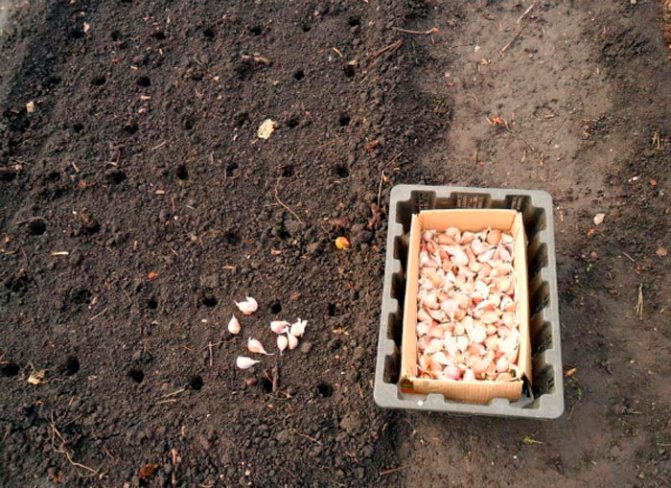

Quite often you can hear the expression "garlic seeds" or "growing garlic from seeds", but this crop is not capable of forming seeds. Garlic is propagated in a vegetative way, namely, with cloves. And for the propagation of winter varieties, air bulbs are also used.
To get a rich harvest, you will need high-quality planting material, in this regard, 15-20 days before planting garlic in the ground in spring, the cloves are removed to the refrigerator shelf, where they will be stratified, then they are sorted by size, while curved, soft diseased, traumatized, too small and irregular in shape, and those that do not have a shell. Then the selected teeth must be disinfected, they are immersed in an ash solution for a couple of hours, to prepare it, you need to combine 1 liter of water and 200 grams of wood ash, then the mixture must be boiled for 30 minutes and cooled. Instead of an ash solution, you can use a solution of copper sulfate (1%) or a weak solution of potassium permanganate, in which the teeth should stay for about 12 hours. a package where they must stay for 2 to 3 days. However, it is not necessary to germinate the garlic before planting. After the ground warms up to 5-7 degrees, you should start preparing the site, for this grooves are made on it, the depth of which should be 70-90 mm, with a row spacing of 20-25 centimeters. Plant the garlic cloves upside down, placing them vertically in the soil, while the distance between the bushes should be 60 to 80 mm. The slices should be buried in the soil to a depth that is 2 times their height (about 50-60 mm). In the groove, the slices are placed with their edge to the south, thanks to this, the garlic feathers will be able to receive a very large amount of sunlight in the spring, as a result, the bushes will become more productive, and it will be much easier to care for them.If the soil is moistened with melted snow, then after planting the garlic, you do not need to water the garden. However, if the soil is dry, the bed must be watered very abundantly. Shoots of spring garlic appear already at a temperature of 3-4 degrees, while they are not afraid of frost, but the surface of the garden must be covered with a layer of mulch (peat).
Planting garlic before winter
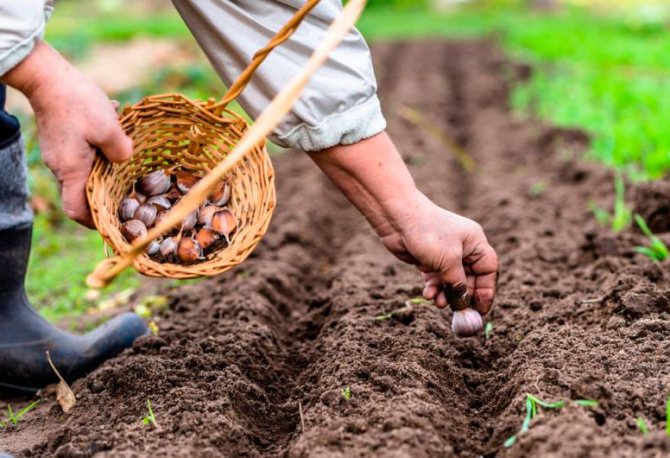

The rules for planting garlic in the autumn are described above, while it should be carried out in the same way as in the spring, but the preparation of the site must be done 15 days before planting the garlic. The bottom of the groove should be covered with a layer of wood ash or coarse sand, the thickness of which should be 15–30 mm, this will protect the slices from contact with the ground and decay.
Most often, spring garlic is smaller than winter garlic. During planting, a distance of 12 to 15 centimeters should be observed between the largest teeth, while a distance of 8 to 10 centimeters should be maintained between small slices. During planting before winter, the garlic should be buried 15–20 centimeters into the soil. The sowing of the bulbs is carried out at the same time, while they are buried in the soil by 30 mm, adhering to the scheme of 2x10 centimeters. Next year, one-toothed bulbs will grow from the bulbs. If you plant them again, then the next year you will grow full-fledged garlic bulbs.
For the winter, the surface of the garden must be covered with a layer of mulch (sawdust mixed with soil or dry peat). The mulching layer will protect the garlic from freezing, while its thickness should be at least 20 mm. In the event that the snow has not yet fallen, but severe frosts have already hit, the garden bed should be covered from above with roofing material or film. After the snow begins to fall, the shelter from the site must be removed. Under a layer of snow, garlic can withstand temperatures as low as minus 20 degrees.
Garlic care
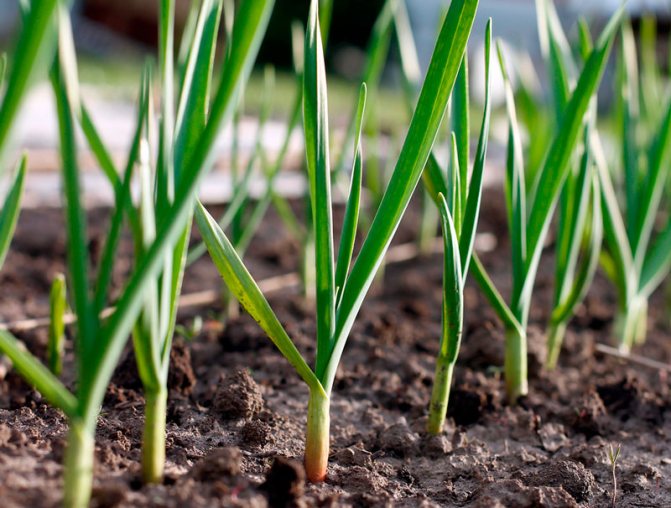

To grow garlic on your site, you need to systematically water, feed, weed and loosen the soil surface. To get a good harvest, it is necessary to pull out the arrows immediately only after they appear, and it also needs to be treated in a timely manner from diseases and pests.
How to water
Watering is carried out as needed, as soon as the top layer of the soil dries up, it should be abundant (for 1 square meter of the garden from 10 to 12 liters of water). However, if it rains systematically, then the garlic will not need to be watered at all. In August, when the bulbs begin to gain volume and weight, watering must be stopped.
Fertilizer
Immediately after the first seedlings appear in springtime, it is necessary to feed them with nitrogen-containing fertilizers (mullein, Fertaka or urea), after half a month, re-feeding is carried out. Throughout the season, you need to feed the garlic only 4 times.
Garlic pests and diseases
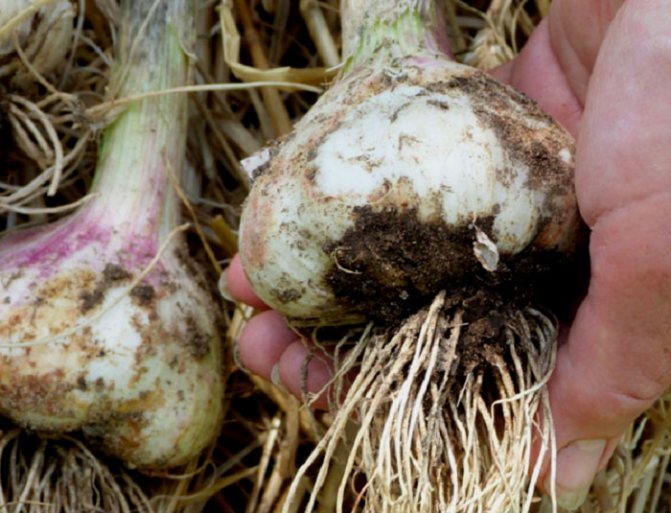

Possible problems
Garlic and onion attack almost the same harmful insects and diseases. Of the diseases, bushes are most often affected by white, cervical and gray rot, helminthosporiosis, fusarium, smut, jaundice, downy mildew (or peronosporosis), mosaic, rust and tracheomycosis. And of the harmful insects, garlic is most troubled by such pests as: onion lurker, tobacco thrips, stem nematode, winter caterpillars, cabbage, garden and gamma scoops, sprout and onion flies, common bear, onion moth and long-stalk.
Garlic processing
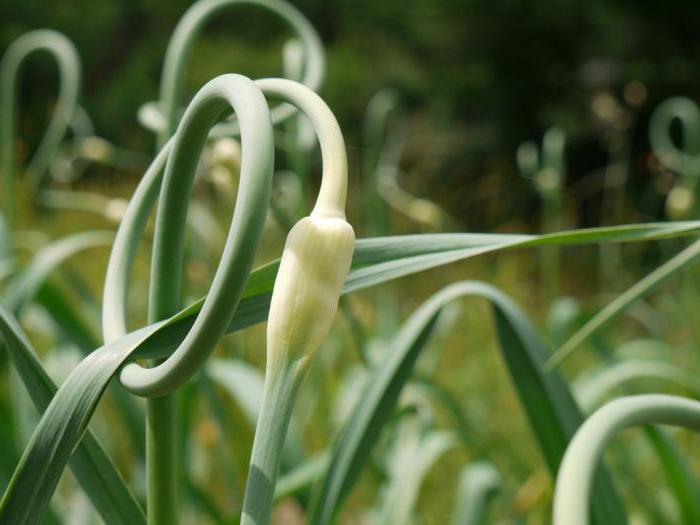

There are a large number of different chemical preparations that can destroy almost all pests and cure a variety of diseases, but before proceeding with the treatment, you should think about the fact that the harmful substances contained in these products can accumulate in the garlic bulb.In this regard, one should not allow a situation when you have to choose between saving the harvest or risking your own health.
To get a rich harvest of garlic, it is imperative to adhere to the rules of crop rotation and agricultural technology of this crop:
- garlic can be grown in the same area where it grew only after 4 or 5 years;
- the storage will need mandatory processing, which is carried out 8 weeks before the laying of the crop, for this, a solution of bleach is used (for 1 bucket of water, 400 grams of the substance);
- before sowing, the cloves and bulbs must be processed.
Before planting, the teeth can be processed in a different way, for this they are heated for 10 hours at a temperature of 40 to 42 degrees.
Crop rotation rules
The best predecessors crops are green manure (alfalfa, clover, mustard, legumes, phacelia, oats, buckwheat), early cabbage, early potatoes, tomatoes, eggplants, carrots, beets, vegetable and hot peppers.
Stable yields of garlic are harvested in the beds where pumpkin vegetables (zucchini, squash, cucumbers, pumpkin) grew in the previous season, since fresh manure is introduced under them, which has time to decompose in a year and saturate the soil with vermicompost and necessary minerals.
Garlic is not planted after plants of the Onion family (garlic, onion, bulbous flowers). In the place already used for these crops, garlic can be cultivated only after 3-4 years due to the danger of the accumulation of pathogens and pests in the soil.
Cleaning and storing garlic


Spring garlic is harvested from the second half of August to the second decade of September. And they start harvesting winter garlic in the last days of July or in the first days of August. You can understand that the time has come to harvest the garlic by several signs:
- the formation of new feathers has stopped;
- old feathers died and turned yellow;
- the heads are fully formed, they have the color and size that are characteristic of the given variety.
If you do not harvest the crop in time, the plants will start to grow again, while the heads will fall apart into slices, and they can no longer be stored for a long time. The heads must be pulled out or dug out of the ground using a pitchfork, while they must be folded at the edge of the furrow to dry. Then they must be shaken off the ground and folded in the open air, where they will have to dry at a temperature of about 25 degrees for a week and a half, or the garlic is dried for 7 days in a well-ventilated room at a temperature of 30 to 35 degrees, then the foliage must be cut off and roots, and the remaining neck in length should reach about 50 mm for non-shooting varieties, and for shooting varieties - about 20 mm.


Winter garlic is best stored at an air temperature of 2 to 4 degrees, while spring garlic is stored at 16–20 degrees. Winter garlic is stored much worse than spring garlic, it most often rots and dries quickly. At the same time, the storage should not be excessively humid or too dry. Best of all, such a vegetable is stored at an air humidity of 60 to 80 percent. The longest stored are those heads that have three covering scales and the bottoms are burned with fire.
A very popular way of storing garlic, in which it is woven into wreaths or braids. The false stem should not be removed at the head, while the foliage must be cut off, then it is braided into a braid and begins to do it from below, while new heads are added gradually so that the braid is stronger, twine must be woven into it. In order to store it in a suspended state, a loop should be made at the end. The easiest way is to tie the heads in a bundle for false shoots. For storage, both bundles and braids are hung under the ceiling or under the roof of an attic or dry shed.
Also, the method of storing garlic in nets or nylon stockings is very popular among gardeners, while they need to be hung. You can save the garlic by folding it in a wicker basket, which is stored for storage in a living room, but not heated in winter, for example, on a veranda or attic. Still such a vegetable is stored for storage in glass jars, which must be sterilized in advance, and, if desired, it can be sprinkled with salt. If the garlic heads are sprinkled with salt, then they should be stored in small wooden boxes. Garlic heads can be rinsed in brine, after they dry, they need to be stored in small linen bags that are hung from the ceiling. The stored garlic heads must be systematically sorted out, which will allow timely removal of rotten and dried specimens.
Diseases
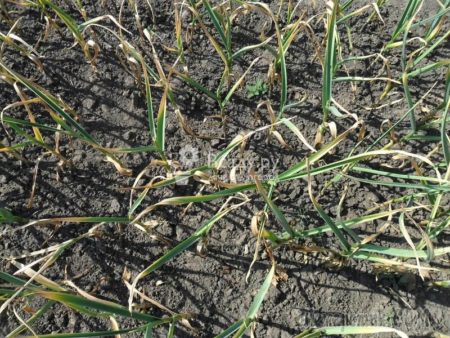

If the rules for harvesting and storing the crop are violated, garlic can be affected by bacteriosis or penicillous rot of the bottom. The first signs of the disease are yellowing of the foliage, after which the entire ground part of the plant dies off. Also, the culture can get sick with rust, it manifests itself in small specks of red color along the entire perimeter of the green mass, over time the spots merge with each other. For the treatment of rust, plantings are treated with fungicides, a 0.4% Oxychom solution or 0.3% Bravo will cope well with the disease. Repeat the treatment several times, observing the dosage, the interval between spraying should be at least 7 days.

